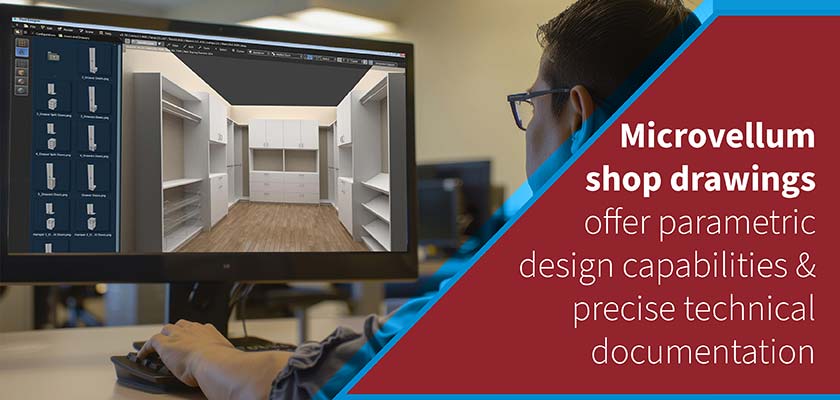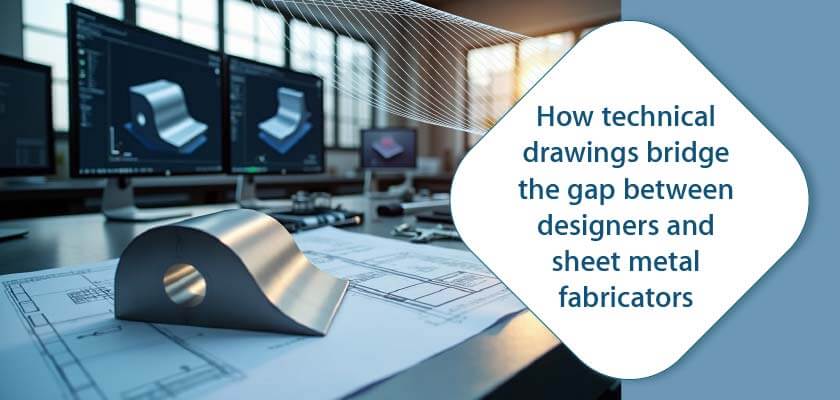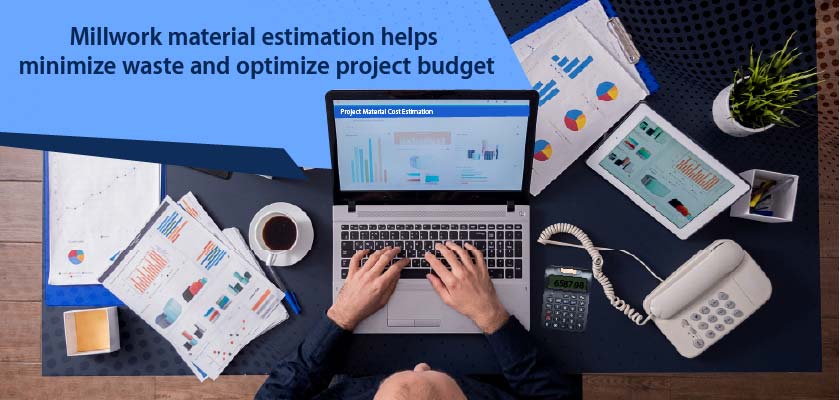BIM implementation enables contractors to effectively design, execute and manage building projects while offering greater control over their construction sites and projects.
info@truecadd.com
5 FAQs: BIM implementation for Contractors
Delivering projects within the stipulated time and budget, while managing digital workflows between multiple stakeholders, is critical to the success of any project. BIM facilitates a collaborative construction process across settings- preconstruction, construction and post-construction – helping contractors gain huge efficiencies.
BIM implementation offers contractors enhanced design quality, better scheduling, lesser rework and more efficient maintenance planning. Content rich, coordinated and clash-free 3D models deliver detailed project information and enhanced visibility. A collaborative BIM model allows various project stakeholders including architects, contractors and sub-contractors to communicate with ease for quicker decision-making.
In this blog, we talk about 5 FAQs that can assist contractors with seamless BIM implementation.
5 FAQs related to BIM implementation for contractors
1. How can contractors extend BIM to onsite project execution for improved onsite collaboration?
Contractors can improve onsite collaboration by extending job site project execution with BIM-driven digitalized workflows. Accurate and detailed construction and shop drawings enable contractors to understand what needs to be installed, and what needs to be built. With 3D models and accurate construction drawings at their disposal, contractors have a better ability to understand design intent in taking the project forward and achieve final deliverables.
The integration of BIM for onsite processes improves construction phasing and site coordination.
BIM reduces onsite surprises by making contractors aware of:
- building objects and their locations
- materials procurement and logistics
- workflows for accurate fabrication and installation
Contractors can begin work with a higher level of confidence and preparedness by utilizing the full potential of BIM intelligence.
Knowing the requirements of a project and understanding onsite challenges is key to make decisive calls and plan BIM adoption. Standardized workflows to collect, store, and analyze job site generated data, help better connect onsite activities with offsite teams in a transparent and collaborative environment.
BIM experts at TrueCADD created a coordinated and clash-free 3D BIM MEP model in Revit at LOD 400 for an airport terminal in Oman. Detailed visualization and better project insights offered by the model, drove hassle-free onsite installation, saving the client $7M in operational costs.
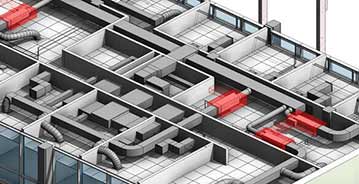
Traditional 2D methods of managing change orders can be challenging as these solutions are not dynamic in detecting onsite modifications.
BIM enables contractors with improved change order management workflows through:
- Better project insights and onsite control based on detailed visualization of quantity changes
- System isolation for new or modified components
- Improved material quantity reviews and sub-contractor cost submission to verify change orders
2. How can BIM help contractors with accurate project bidding?
To build accurate project bids for clients or owners, contractors need precise cost calculations of building materials, equipment and other building resources. Traditional methods of estimating costs based on 2D tools are ineffective, time-consuming and often inaccurate.
While BIM models are built with objects that contain comprehensive information and geometry, contractors can propose accurate quotes based on precise quantity takeoffs. It makes the process quick, accurate, and effective.
BIM provides contractors with:
- real-time cost analysis and risks
- accurate cost estimates
- enhanced certainty during the bidding phase with 4D consolidation
- testing and verification for client submission and value
McKinsey reports that 75% of the companies that have adopted BIM have witnessed a positive ROI.
Contractors can win greater projects when clients witness well planned BIM workflows leading to enhanced efficiencies. BIM helps contractors win complex contracts that include Public-Private (PPP’s), Lump-Sum Turnkey (LSTK), and Integrated Project Delivery (IPD).
TrueCADD developed a clash-free 3D BIM model in LOD 500 with accurate quantity take-offs and construction scheduling for a University hospital building in Saudi Arabia. The Project management firm was able to streamline construction activities, reduce rework, save time during construction and garner better ROI.
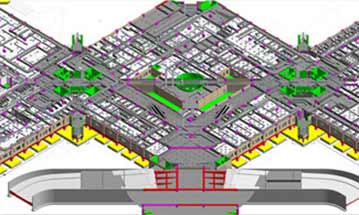
By using BIM technology, contractors can control the project cost, and resolve bidding challenges through accurate BOQs. With an accurate interpretation of each building component in 3D, the final model can be analyzed, and construction processes can be optimized in the bidding. Contractors can leverage BIM to enhance quotation rationality and management by comprehensive visualization of funds at various stages of the bidding.
3. How can BIM help in improved scheduling or sequencing for contractors?
Inaccurate scheduling or sequencing can turn the project in a negative direction leading to delays or rework. BIM provides contractors with visualization for planned schedule versus actual project progress. A detailed view of the project through an animation sequence gives contractors the ability to see what sub-contractors are doing and what needs to be built.
Better job site management leads to quick and quality construction through a transformation from labor-intensive workflow to a digital BIM-enabled workflow. 4D scheduling assists contractors by finding a solution to problems in the design phase, rather than during onsite construction. This helps contractors deliver greater project value and improve their ROI.
4D BIM benefits for contractors include:
- Build better sequencing
- Create an accurate baseline schedule
- Solve logistics problems
- Plan onsite safety
- Keep the owner(s) informed
TrueCADD created a 4D BIM model for an architectural firm in Manchester, UK with construction scheduling using Revit® and Navisworks®. They provided added sequential video that helped the client improve design intent communication with their end customers, save costs and reduce reworks by a huge amount.
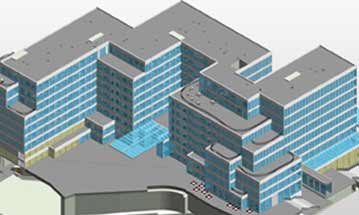
As the push for 4D grows, merging the BIM model with scheduled activities validates the accuracy of planned sequences in the project schedule. General contractors using the tools of 4D scheduling to simulate construction, help build a perimeter of confidence for owners and promote better project delivery.
4. How can BIM facilitate fabrication for contractors?
Construction or fabrication drawings extracted from 3D BIM models contain no ambiguities. Coordinated and clash-free 3D BIM can help contractors extract or export accurate 2D fabrication-ready drawings, which serve as a precise guide to executing building equipment fabrication.
With accurate details on sections, views, dimensions, welding information, standards, and other details, fabricators can:
- gain architectural or engineering comparisons
- make alterations from the original documents
- get verifications or suggestions by approval authorities
- facilitate shorter lead time and cost savings
- build industry-grade components or equipment that includes MEP units, trusses, millwork and cabinetry, doors and windows, etc.
The use of BIM for fabrication drives a fully digital process from design to manufacturing. Design models can be used to save time and gain better fabrication efficiency. A highly accurate, coordinated, and consistent BIM model provides a single source of truth.
TrueCADD created a 3D model with general arrangement and fabrication drawings with part count for each wall of a 22 storey building, in Netherlands. The client gained smooth and hassle-free documentation, with full sheet setup. Using BIM 360® along with automation tools reduced production time by 20% and improved output quality by 100%.
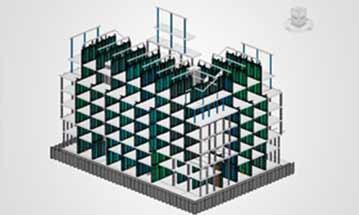
The cost of the overall structural frame can be lowered by getting designers and fabricators to collaborate early on fabrication considerations. With agreements in steel tonnages and coordination between building components and steel fabrication, onsite issues can be resolved, reducing installation costs. As models and fabrication drawings are created back-to-back, fabrication can begin sooner, leading to quick steel installations.
5. How can BIM improve onsite construction safety for contractors?
Adopting BIM can immensely improve construction site safety for contractors, by pre-visualizing onsite hazards at the design stage, leading to minimum risks and construction clashes at a later construction stage. Pre-visualization of the project keeps stakeholders on the same page, leading to timely completion of the project with least clashes and maximum savings.
BIM can serve as a key element for a safer construction site. Here are some ways in which BIM helps contractors make construction sites safe.
-
Smarter risk forecasting
Identifying and resolving clashes at the pre-construction stage results in risk mitigation, allowing contractors to ensure that necessary safety procedures are implemented for workers, thereby increasing worksite safety.
As per a Dodge Data & Analytics Smart Market report, 37% of owners and contractors have reported more than a 5% reduction in reportable incidents due to BIM adoption.
-
Better onsite-monitoring
BIM enables contractors to effectively monitor projects by allowing unrestricted flow of information among teams and keeping them informed of their roles and responsibilities, reducing workload and miscommunications. This helps contractors monitor construction sites better.
-
Accurate spatial planning via simulations
BIM allows for accurate spatial planning as well placement of equipment, machines and tools via visualizations and simulations at the construction site. With “Virtual Safety tours”, contractors can easily navigate through construction sites. The exact placement of machinery and vehicles as per the site layout, leads to accident-free and hazard free construction sites.
-
More informed accident investigation
BIM is the perfect tool of the future for contractors to help minimize and reduce construction related accidents by eliminating and addressing all the flaws in the design stage itself. Real-time data updates and Cloud technology have made BIM a contractor’s best ally.
BIM is the perfect tool of the future for contractors to help minimize and reduce construction related accidents by eliminating and addressing all the flaws in the design stage itself. Real-time data updates and Cloud technology have made BIM a contractor’s best ally. The use of BIM is on the rise by contractors due to the host of benefits it offers -resolving clashes, reducing rework, saving construction costs and completing projects with stipulated timelines.
Conclusion
The adoption of BIM enhances project productivity, efficiency, value and safety of construction sites for contractors. It showcases a bigger picture for building owners to invest in high-quality deliverables for cost savings in the long-run. Opportunities can be further leveraged after a project is complete to handle facilities management with BIM–led data and intelligence.
BIM serves as a single source of truth to get every stakeholder on the same page. Contractors and sub-contractors must participate early on through project collaboration. Connected collaboration between contractors and various stakeholders helps deliver projects on time and within cost. The use of BIM ensures errors are identified and resolved early on to improve onsite construction processes. BIM allows contractors to take complete control of their project over the complete building lifespan.
Need help on an ongoing basis?
We establish long term business relationships with clients and are committed to total customer satisfaction.


